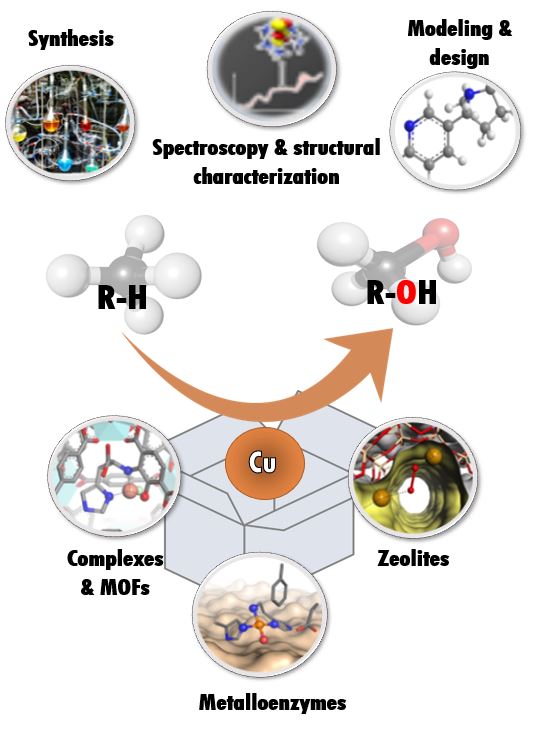

Benedikt Floeser – Postdoctoral researcher
The 19th International Symposium on Relations between Homogeneous and Heterogeneous Catalysis
Oslo, June 27 – 30, 2022
IZC-2022 – 20th International Zeolite Conference
Valencia 3-8 July 2022
8th International Conference on Metal-Organic Frameworks and Open Framework Compounds
Dresden 4-7 September 2022
9th World Congress on Oxidation Catalysis
Cardiff 4-8 September 2022
SURFCAT Summer school 2022
Kysthusene Gilleleje 7-12 August 2022
Chiara Negri – Postdoctoral researcher
Kaiqi Xu – Postdoctoral researcher
Isabelle Gerz – PhD
Recent NMBU publications on LPMOs that are relevant for CuBE:
Andrea Martini -Postdoctoral researcher
Emilia Sannino – Administrative staff
Silvia Porporato – Synthesis and characterization of protein-bioconjugates towards the catalytic conversion of methane into methanol – Supervisor: C.Barolo CoSupervisor: S.Bordiga; M.Bonomo – April 2021
Davide Brignone – Synthetis and characterization of copper complexes as model systems for new catalysts in direct methane-methanol conversion (DMTM) – Supervisor: S.Bordiga CoSupervisor: C.Barolo – June 2021
Laura Leonardi – Polymers-protein bioconjugation as a stable and effective platform for the partial oxygenation of methane – Supervisor: M.Bonomo CoSupervisors: C.Barolo; C.Pontremoli – October 2021
Daniele Bonavia – Multi-technique characterization of Cu-complexes for the direct oxidation of light hydrocarbons – Supervisor: E.Borfecchia; M.Signorile – October 2021
Gabriele Deplano – Cu-based catalysts for C-H bond activation – Supervisor: S.Bordiga CoSupervisors: M.Signorile;
Barbara Centrella – A multi-technique approach aimed at developing new Cu-based catalysts for C-H activations: from design, synthesis, and characterization to evaluation of their performance – Supervisor: C.Barolo CoSupervisors: M.Bonomo